Last Chance to Catch NYC's Holiday Notalgia Train
We met the voices of the NYC subway on our nostalgia ride this weekend!


One of the most iconic spots in Brooklyn, Grand Army Plaza is a public plaza comprising the main entrance of Prospect Park in Brooklyn. Known for its Soldiers’ and Sailors’ Arch, Bailey Fountain, and other Civil War-related monuments, the plaza has attracted recent media attention as the site of a number of protests this past weekend into this week. May 31 saw one of New York’s first protests in New York City, as 500 protesters gathered around a stage set up in Grand Army Plaza before walking to the Barclays Center. Yet, the plaza has been a cultural symbol of Brooklyn whose history dates back all the way to the Revolutionary War.
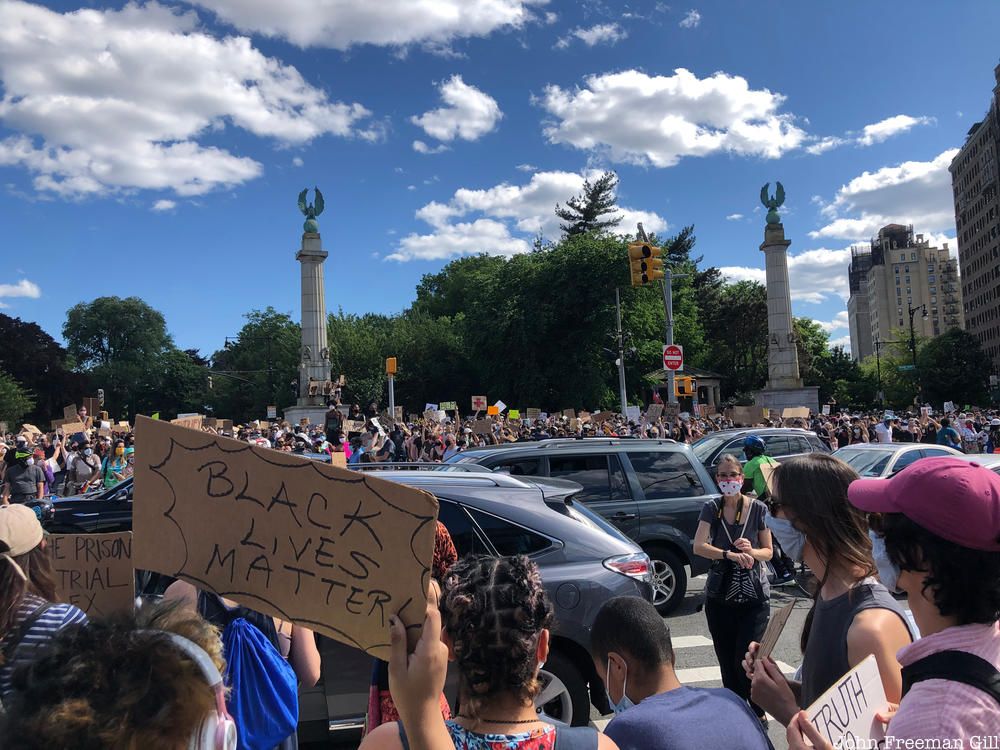
Photo by John Freeman Gill, author of The Gargoyle Hunters
Representing the values of the Union Army and of liberation, Grand Army Plaza has been the site of a number protests and demonstrations in the past. Following the assault and abuse of Haitian man Abner Louima by the NYPD in 1997, marchers carrying flags from nearly every Caribbean island and signs reading “Giuliani Time, Brutality Time” met and demonstrated at Grand Army Plaza. The plaza was also the site of Occupy Brooklyn protests in 2011 against economic inequality.
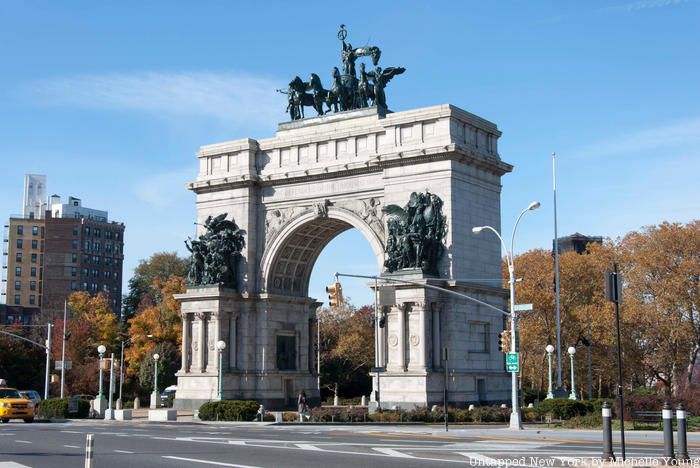
Today, the plaza consists of two concentric rings of traffic where eight streets converge, such as Flatbush Avenue and Vanderbilt Avenue. Despite being considered “Dante’s 10th circle of hell,” as it is often considered one of the most difficult places to drive in Brooklyn, the plaza connects the areas of Park Slope and Prospect Heights with Downtown Brooklyn and other surrounding neighborhoods. Many visitors traveling to nearby sites like the Central Branch of the Brooklyn Public Library and the Brooklyn Botanical Garden often come to the plaza, which houses a number of historic monuments and art.
Grand Army Plaza was built on the former battlegrounds of the Battle of Long Island, the first major battle of the Revolutionary War to take place after the signing of the Declaration of Independence. The battle was a British victory, which saw George Washington escape from Brooklyn Heights and Nathan Hale’s eventual execution for spying.
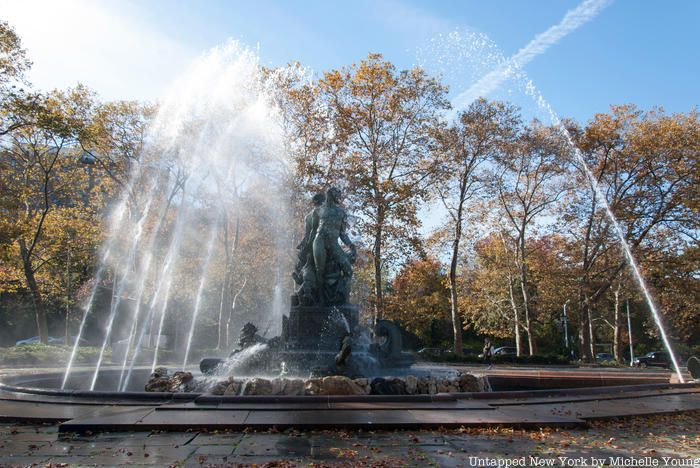
The site was developed starting in 1867, just a few years after James S.T. Stranahan, the “Father of Prospect Park,” began working on Prospect Park. Calvert Vaux and Frederick Law Olmsted, who together designed Central Park, began work on Prospect Park in 1866 after the Civil War stalled the park’s construction. The two architects began planning Grand Army Plaza, originally just called “The Plaza,” as an elliptical piece of land at the park’s northeast. The plaza was graded starting in 1866, and its distinctive mounds were installed in 1867. The original plan for the plaza only featured The Fountain of the Golden Spray, which was replaced in 1873 by a domed lighted fountain. In the coming years, gas-fueled lamps and trolley tracks were built in the plaza, and it is estimated that 11 million people visited Prospect Park (many passing through the plaza) in just the park’s first five years.
Although not designed for any war-related purpose, a number of Civil War-related monuments were added to the plaza just a few years after its initial construction. In 1869, Henry Kirke Brown’s statue of Abraham Lincoln was placed by the fountain’s stairs, and was later moved to Concert Grove. Additional monuments would be installed around the 1890s when the Parks Commission called the plaza a “failure,” since the Panic of 1873 halted construction progress for the next few years. The Parks Commission even considered it like “Siberia in winter and Sahara in summer” in an annual report, which led to the plaza’s reconstruction starting in 1889.
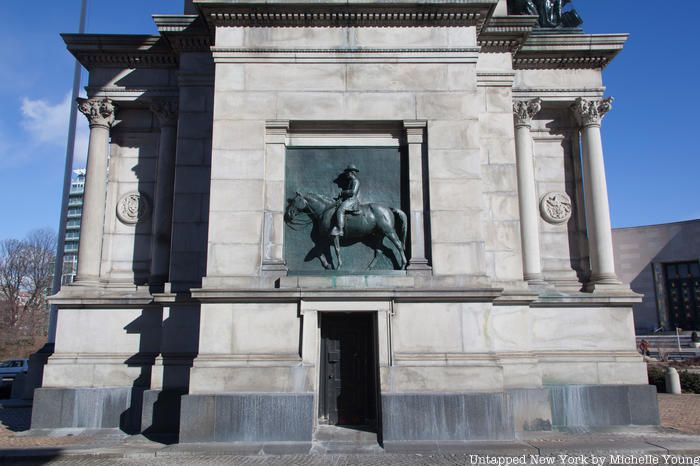
In the years to come, other war-related structures were added, like the Soldiers’ and Sailor’s Arch dedicated “To the Defenders of the Union, 1861–1865”. Architect John H. Duncan was tasked with designing the arch, and Olmstead and Vaux built the arch with Stanford White. President Grover Cleveland led the arch’s 1892 unveiling, and as part of the City Beautiful movement, three bronze sculptures on the arch were designed by Frederick MacMonnies. Equestrian bas-reliefs of Abraham Lincoln and Ulysses S. Grant sculpted by William Rudolf O’Donovan and Thomas Eakins, and MacMonnies also created Army and Navy sculptures depicting the Union Army and emancipation.
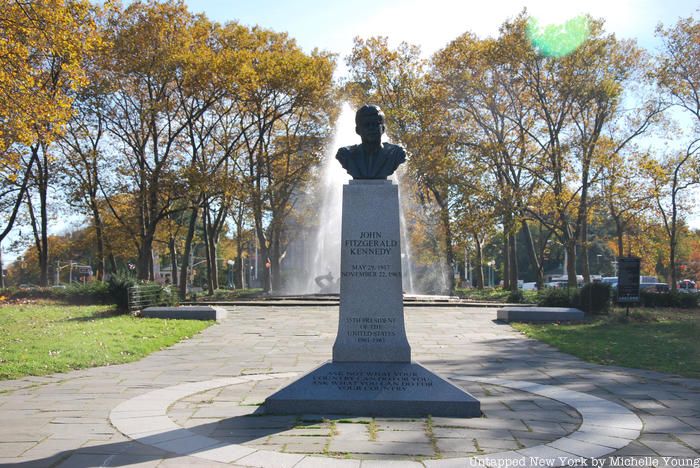
In the following years, sculptures were erected of Union Army general Gouverneur Kemble Warren (1896), Brooklyn-based bankerand philanthropist Henry Maxwell (1903), British-American gynecologist Alexander J.C. Skene (1905), and Union general Henry Warner Slocum (1906). An Electric Fountain replaced the dome fountain in 1897, but was removed in 1915 with the construction of new subway lines like the BMT Brighton Line. The electric fountain’s lights were actually controlled by an operator in a sunken bunker at the fountain’s base. The Bailey Fountain, constructed in 1932, was built at the site of the three previous fountains. Other sites at the plaza include the John F. Kennedy Monument and two gazebos with Guastavino vaulting.
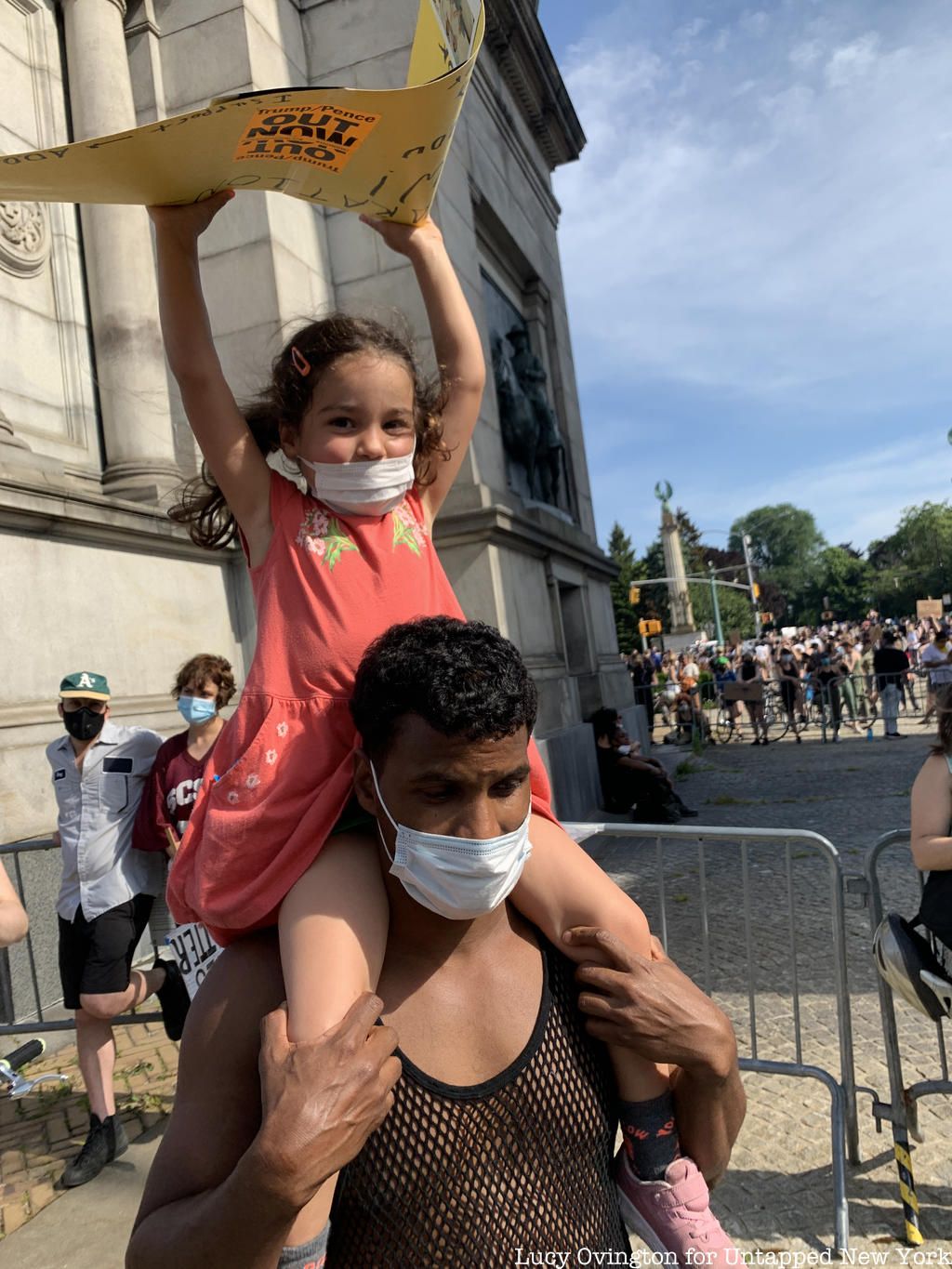
Photo by Lucy Ovington, founder of Glowe, who says “Our favorite protest so far has been at Grand Army Plaza, the historic site created a powerful backdrop to the speeches given by different activists such as the NY president of the NAACP. The community spirit is strong and there are so many people helping out offering water hand sanitizer, snacks.”
The plaza was renamed Grand Army Plaza in honor of the 60th anniversary of the Grand Army of the Republic, founded in 1866 composed of Union Army veterans and others who served in the Civil War. Surrounding streets that allude to the Civil War include Lincoln Place, President Street, and Union Street. By 1975, the plaza became a National Historic Landmark, despite becoming increasingly dangerous for automobiles by the 1950s.
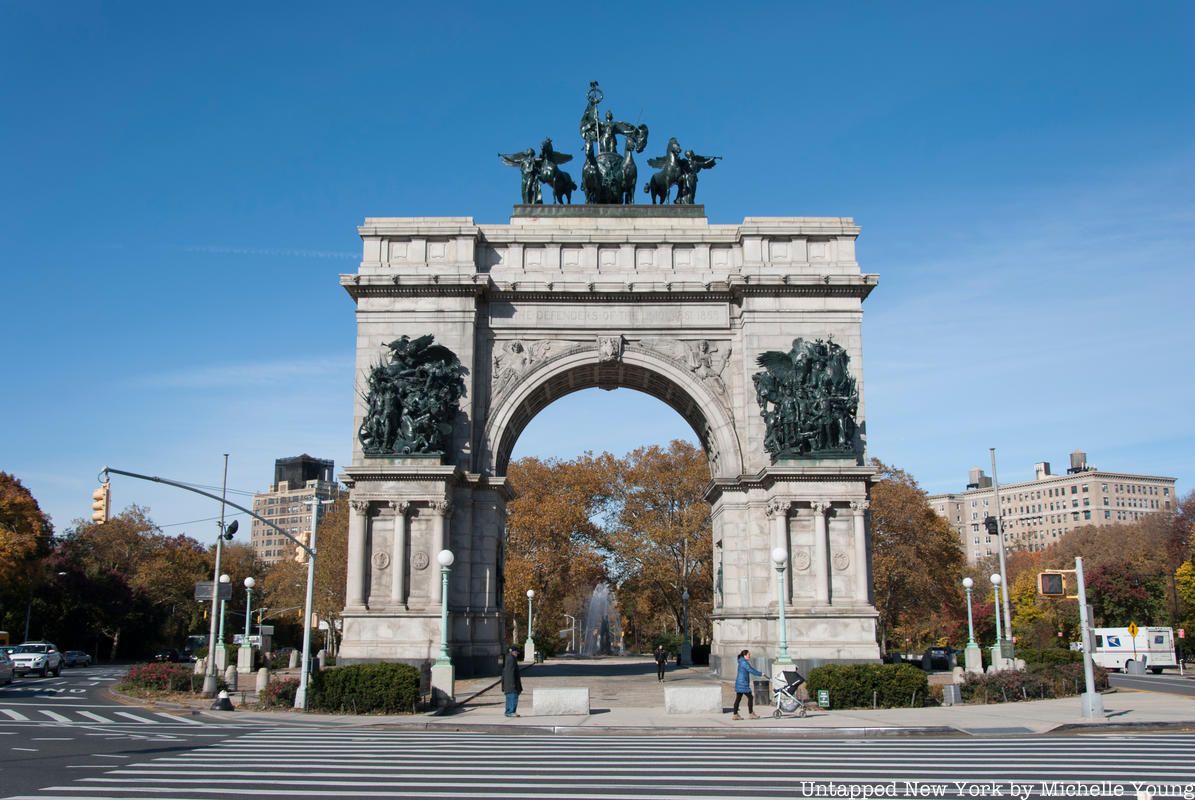
In 2018, Mayor Bill de Blasio announced that the city would be providing $8.9 million to restore the arch, allowing access to the interior of the arch and its top-level observation deck. This funding went towards replacing the arch’s roof and repair its interior iron staircases leading to the roof. The arch was also home to the Puppet Museum, featuring over 100 large puppets, but the museum relocated to Brooklyn College.
As Grand Army Plaza transforms into a symbol of hope during these current protests over the death of George Floyd, protesters and Brooklyn residents alike unite under the statues of notable and influential figures like Abraham Lincoln and Henry Warner Slocum to achieve greater equality and seek justice.
Photos from the recent demonstrations provided by John Freeman Gill, author of The Gargoyle Hunters, Brad Vogel, Larissa Hayden, and Lucy Ovington of Glowe.
Next, check out 8 Monumental Arches in NYC and Video and Photos of the Last Week of NYC Demonstrations for George Floyd.
Subscribe to our newsletter